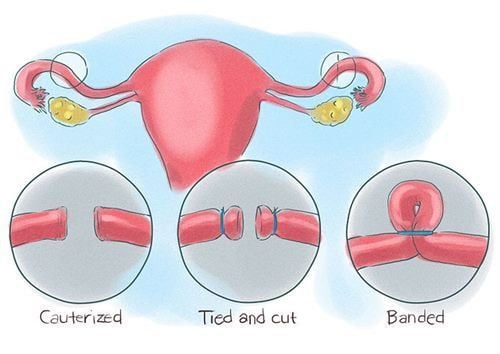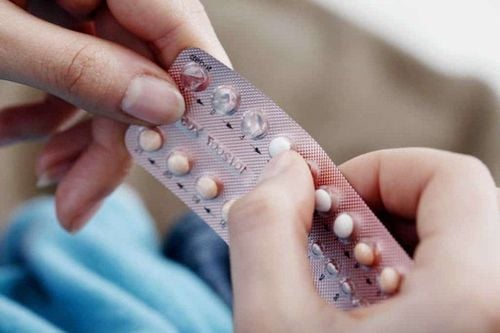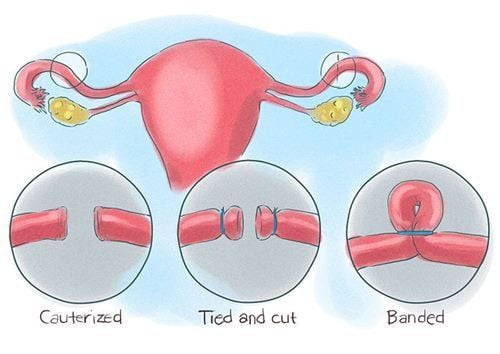The article was reviewed and consulted with MD Phan Diem Doan Ngoc, Specialist in Obstetrics and Gynecology, Vinmec Central Park International General Hospital.
Women who deliver via cesarean section are generally advised to limit childbirth to two deliveries to safeguard the health of both mother and baby. Tubal ligation performed during a cesarean section is a contraceptive option commonly chosen by women who decide not to have more children. Below is detailed information about tubal ligation and the reasons for performing this procedure during a cesarean delivery.
1. What Is Tubal Ligation?
Tubal ligation is a permanent method of contraception that effectively prevents pregnancy. This sterilization procedure makes a woman infertile or significantly reduces the likelihood of natural conception.
Tubal ligation performed during a cesarean section is a convenient option, as it can be seamlessly integrated into the delivery process. Many women choose this method once they have decided not to have more children. During the procedure, the fallopian tubes are blocked, preventing eggs from traveling through the tubes and meeting sperm. This obstruction stops fertilization, ensuring that pregnancy cannot occur.
Several techniques are commonly used for tubal ligation, including cutting, folding, or removing sections of the fallopian tubes, as well as blocking them with clips or sutures.
Tubal ligation is widely regarded as a safe and effective method of permanent contraception with minimal side effects. Complications after the procedure are exceedingly rare. Importantly, this method does not affect a woman's hormonal balance and has no impact on breastfeeding.

2. Reasons for Performing Tubal Ligation During a Cesarean Section
The incidence of cesarean sections has been steadily increasing, along with the number of women undergoing multiple cesarean deliveries. For women who have already had two cesareans, subsequent pregnancies will likely necessitate another cesarean. This elevates the risk of various complications during and after surgery, including infections, uterine rupture, bleeding, placenta previa, bladder injury, and other serious health risks for both the mother and the baby.
Given the rising prevalence of cesarean deliveries, it is essential to provide highly effective contraception for women undergoing cesarean sections, particularly those with a history of multiple cesareans, in order to mitigate the risk of unintended pregnancies. Tubal ligation performed during a cesarean is a near-permanent method of sterilization, which is one of the primary reasons it is commonly recommended during cesarean births.
Tubal ligation is generally considered when a woman has completed her desired family size, has no intention of having more children, or when her health condition does not support another pregnancy.
After the procedure, reversing tubal ligation to restore fertility typically requires a complex surgical procedure to reconnect the fallopian tubes, which may not always be successful.

3. Risks Associated with Tubal Ligation During a Cesarean Section
While tubal ligation performed during a cesarean section is generally considered a safe and effective procedure, it carries certain potential risks. These include allergic reactions to medications, bleeding, infection, and, in rare cases, the possibility of pregnancy despite the procedure. However, such complications are uncommon.
It is advisable for younger women, who may not yet be certain about their future family planning, to avoid choosing tubal ligation, as the chances of reversing the procedure and restoring fertility are minimal.
Tubal ligation during a cesarean section is often recommended for women who have undergone multiple cesarean deliveries or for those whose health conditions make future pregnancies medically risky. It is also essential that both partners are fully informed and in agreement with the decision, as it is a significant emotional and psychological commitment. The procedure should only be performed at reputable medical facilities to minimize the risk of complications.
To arrange an appointment, please call HOTLINE or make your reservation directly HERE. You may also download the MyVinmec app to schedule appointments faster and manage your reservations more conveniently.
To arrange an appointment, please call HOTLINE or make your reservation directly HERE. You may also download the MyVinmec app to schedule appointments faster and manage your reservations more conveniently.








